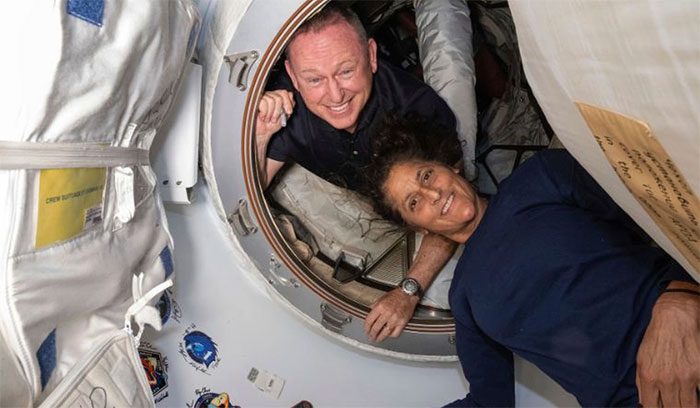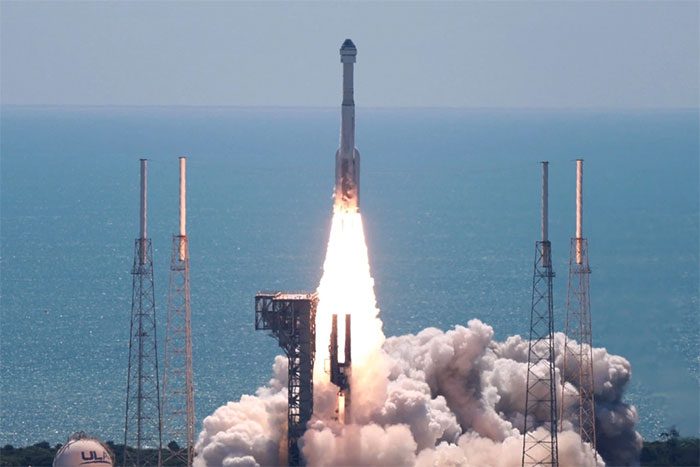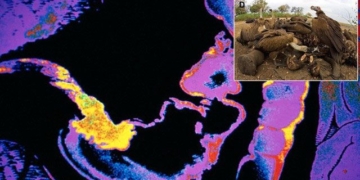Once regarded as a pivotal flight for both NASA and Boeing, technical issues have turned the Crew Flight Test (CFT) into one of the most forgettable missions in history.
On June 5, Boeing’s Starliner spacecraft was successfully launched, transporting NASA astronauts Butch Wilmore and Sunita Williams to the International Space Station (ISS) as planned within a week.

Astronauts Butch Wilmore and Sunita Williams on the International Space Station (Photo: NASA).
This was the first time the Starliner spacecraft was used as a crewed vehicle. Furthermore, it marked the first mission involving astronauts using a rocket from the Atlas line since the Mercury program in the early 1960s.
For this reason, the mission named the Crew Flight Test (CFT) aimed for a significant milestone, potentially being viewed as a historic flight for the U.S. aviation industry.
However, a series of technical issues turned this into an unforgettable flying experience for the two astronauts, who are still stranded on the ISS with no clear timeline for returning to Earth.
First, it is essential to recall a bit of the Starliner’s history. During its first launch in December 2019, the Starliner encountered a series of problems right after takeoff, causing it to become stranded in orbit and unable to reach the necessary altitude.
In the second test launch, the Starliner successfully completed its mission. But as it transitioned to a crewed flight, the Starliner was consistently “behind schedule” for various reasons.
A notable delay occurred in 2023 when flammable material was discovered in the Starliner’s wiring system.

Starliner successfully launches on June 5 (Photo: NASA).
On May 7, Boeing and NASA planned a test launch of the crewed rocket, destined for the International Space Station (ISS). However, issues with the second stage valve of the rocket led to the flight being postponed, even after it had been placed on the launch pad.
Nearly a month later, on June 5, Boeing’s Starliner finally launched successfully, marking a significant milestone after nearly two decades since the U.S. established commercial crewed space flights.
Just when everything seemed to be going smoothly, “bad luck” continued to follow this spacecraft. Upon arriving at the ISS, experts discovered that the spacecraft had several helium leak issues from the equipment compartment. Surprisingly, this issue had been identified even before the spacecraft left the launch pad.
However, the flight proceeded due to NASA’s firm assertion that it would not pose any threats during the journey. After completing half of the journey and successfully docking with the ISS, the Starliner experienced additional leak issues.
“The expert teams identified three helium leak incidents on the spacecraft. One incident was discussed before the flight. The other two incidents occurred once the spacecraft entered orbit,” NASA updated the mission in a statement.
Currently, NASA is still working to resolve the Starliner’s issues. Experts have identified and found solutions to the problems.
NASA officials are also trying to offer a positive perspective on the current situation. They assert that the two astronauts are “enjoying their time on the space station” and “will return home at the right time.”
However, these statements cannot deny the reality that the Starliner is still experiencing issues and has no set date for returning to Earth. As of now, it has been 50 days since the mission spacecraft was deployed. The two astronauts on board have spent five times longer than the original planned duration (the mission was intended to last 10 days).
The challenges that the Starliner faces are not unprecedented in the history of space exploration. Previous missions, such as the Apollo 13 incident in 1970, also encountered unexpected obstacles, requiring astronauts and ground crews to demonstrate adaptability and flexibility.
While public attention worldwide closely monitors the developments unfolding in space, NASA quietly views this as a measure of perseverance and innovation, which could even shape future goals for human spaceflight.
In this context, the unintended extended stay of Sunita Williams and Butch Wilmore is seen as a response to the expertise and livability of humans in extended space programs, where they must patiently wait for flights to return safely to Earth.
The last time Sunita Williams went to space was in 2012, while Butch Wilmore’s last trip was in 2015.


















































